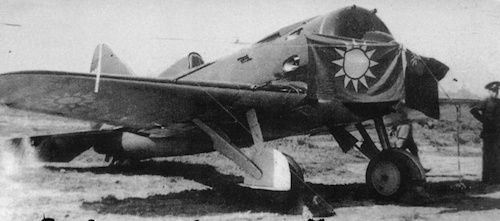The Soviet fighter Polikarpov I-16, during the Spanish Civil War, was nicknamed Flat (mouse) by the Nationalists, while the Republicans nicknamed him Moscow (the reference was to the insect, not to the city). For the Soviets, however, it was Isaac (donkey).
Il Polikarpov I-16 it was conceived around 1932; moreover, it can be considered the first fighter with retractable landing gear, and as such it was the progenitor of a formula. In that period theIsaac it was described like this: “small like a toy, very light, ungainly”.
The first I-16 took off for the first time on December 31, 1933, and immediately proved to be a very efficient aircraft. At the trials it managed to reach a speed of 360 km/h. The vehicle, according to what was reported by the insiders of the time, was "sublime" to maneuver. It should be emphasized that for a long time the Polikarpov I-16 it was presented as the "jewel" of the Soviet Air Force.
- Isaac of the first series, with a 480 HP engine, achieved important successes; in fact, they managed to reach an altitude of 4000 meters in 9 minutes and 15 seconds.
The model of the second series took off for the first time on February 18, 1934, and reached a speed of 454 km/h. This result was considered surprising. It is important to underline that later specimens were able to increase it. However, the aircraft had some shortcomings: very limited range, and poor acceleration and climb capabilities.
 According to estimates i Polikarpov I-16 between 15000 and 20000 units were produced between 1933 and 1942. It is estimated that nearly 500 Isaac they took part in the Spanish Civil War (1936-39), initially in the hands of Soviet pilots and later – starting in 1938 – assigned to the pilots of the Republican Air Force.
According to estimates i Polikarpov I-16 between 15000 and 20000 units were produced between 1933 and 1942. It is estimated that nearly 500 Isaac they took part in the Spanish Civil War (1936-39), initially in the hands of Soviet pilots and later – starting in 1938 – assigned to the pilots of the Republican Air Force.
I Flat they made their debut on November 5, 1936 to support the Republican offensive on Valdemoro, Esquivias and Sesena. THE Polikarpov I-16 used in the conflict they were of the sixth series, and immediately showed a considerable superiority over the German fighters Heinkel He 51 of the notorious Condor Legion. However, i Flat they turned out to be clearly inferior to the Italian fighters Fiat CR 32 ofAviation Legionnaire.
Over time the Isaac, being now outdated aircraft from all points of view, they began to be completely eradicated by German fighters Messerschmitt Bf109. In fact, it is good to remember that in the last period of the war - especially since 1938 - the real absolute masters of the skies of Spain are the Messerschmitt Bf109, with which the flying ace Werner Molders managed to score the most aerial victories for the Condor Legion (Molders also distinguished himself in WWII).
The capitulation of the Republicans is only a matter of a short time…
It should be noted that the conflict is also decided by theLegionary Air Force, who with his "umbrella" gave protection to the nationalist troops on the various fronts1.
 I Polikarpov I-16 they achieved moderate successes in China – during the Sino-Japanese war – against Japanese bombers which operated without a protective escort. However, the situation changed dramatically as fighters entered the scene Nakajima Ki-27. Indeed, i I-16, clearly inferior, were annihilated by Ki-27 Japanese.
I Polikarpov I-16 they achieved moderate successes in China – during the Sino-Japanese war – against Japanese bombers which operated without a protective escort. However, the situation changed dramatically as fighters entered the scene Nakajima Ki-27. Indeed, i I-16, clearly inferior, were annihilated by Ki-27 Japanese.
A similar situation occurred in the Second World War. The I-16 they took part in the winter war (1939-40), and later tried to counter (heroically) the fighters of the Luftwaffe. There was no match: the German aircraft were decidedly superior to the Isaac...
- I-16 they were withdrawn in 1945.
Il Polikarpov I-16 (series 24) had a wingspan of 9 m and a length of 6,13 m. The engine consists of 1 Shvestov M-63 from 1100 HP. The curb weight was 1490 kg; the weight with normal load was about 1900 kg, while with maximum load about 3060 kg.
The armament consisted of 2 cannons ShKAS 20 mm, 2 machine guns ShKAS 7,62 mm and 6 RS-82 rockets.
The aircraft had a normal range of about 400 km, while the maximum range with additional fuel tanks was about 700 km.
Top speed was around 489 km/h. The cruising speed was between 300/320 km/h.
The ceiling altitude was about 9700 m.
1 See G. Bonacina, War in the skies. Dress rehearsal for Hitler and Mussolini, in Illustrated History n°220, 1976, p.81
Photo: web












